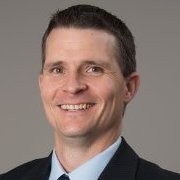FERC Noise Requirement Final Comments
This is Part 7 (final) of The FERC 55 dB(A) Ldn Requirement series, where we learn the practical ins and outs of this requirement.

If I can leave this FERC noise requirement series with one take-away, it is this: for FERC noise projects, an experienced subject matter expert in acoustics or noise control should be sought; with particular emphasis on experience with FERC projects. This almost goes without saying, but oftentimes noise is not front and center on a project manager’s radar, since there are many moving parts to consider on large natural gas projects. Too often I have seen the noise portion of a FERC project tasked to an environmental company or other consultancy that has expertise in some environmental domains (e.g. air quality), but has little to no noise expertise and even less FERC noise project experience. When that lack of experience and expertise does not reveal itself until compliance testing and a noise problem exists, then there is plenty of heartburn to go around. All that being said, I hope that this blog series has provided you with enough insight into FERC noise issues to be better equipped when searching for the right noise control professional for your project. Additionally, I hope that by understanding the technical terms associated with the FERC noise criterion, you are in a better starting position to head off potential problems before they arise.
This series of blog posts presented the following:
- Introduction: The FERC 55 dB(A) L
dn noise limit applies to interstate natural gas transmission and LNG facilities. The criterion is a good reference for projects not regulated for noise. - Part 1: The L
dn metric was defined in words, mathematically, and by example. - Part 2: A continuous L
eq sound level of 48.6 dB(A) is equivalent to 55 dB(A) Ldn . - Part 3: The noise generated by the compressor station or LNG facility is what is regulated (i.e., not combined with the ambient sound). However, FERC does consider the existing sound level at NSAs in its evaluation.
- Part 4: The regulation applies at Noise Sensitive Areas (“NSA”); NSAs were described.
- Part 5: Completing a FERC Resource Report 9 (“RR9”) Noise Section
- Part 6: Demonstrating post-construction, in-service noise compliance
I have enjoyed writing this series and I hope you find it useful. If you have any questions or would like to provide feedback, please email me at tsimmons@ussi.com .
 About the Author - Tim Simmons, Ph.D. - USSI Director of Industrial Acoustics
About the Author - Tim Simmons, Ph.D. - USSI Director of Industrial Acoustics
Dr. Tim Simmons manages USSI's Industrial Acoustics Department. Tim comes to USSI with a wealth of Acoustical and Noise Control knowledge and real-world experience. Tim holds a Ph.D. in Physics from the University of Mississippi and a B.S. in Engineering Physics from the University of Tennessee.
Member INCE, ASA, ASME
Member INCE, ASA, ASME
